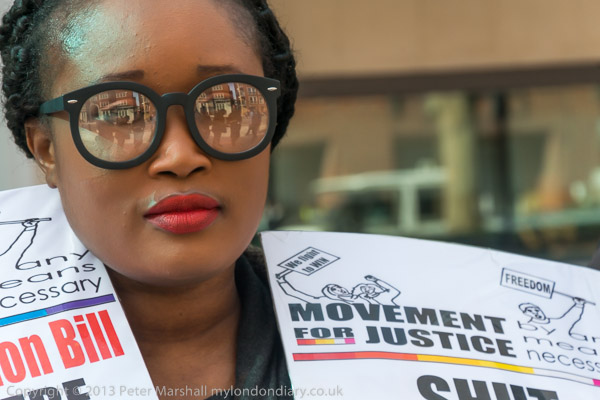Protest the Pope: Sunday 28th March 2010 saw a large protest by a coalition of organisations against the historic state visit planned for the forthcoming September by Pope Benedict XVI. This was the first official visit ever by a Pope to the UK, although in 1982 Pope John Paul II made a pastoral visit here.

England has had a long tradition of anti-Catholicism dating back to even before Henry VIII, often said to have begun with the martyrdom of Saint Alban, beheaded in St Albans (then Verulanium) at some time in the 3rd or 4th century. But matters certainly came to a head (!) again with the split from Rome on largely political and matrimonial grounds by Henry in 1536 in England and 1538 in Ireland (where Henry also ruled, although only proclaiming himself King in 1541 following several hundred years of Anglo-Norman invasion.) The reformation in Scotland in thanks to John Knox in 1560 was considerably more on religious grounds.

Catholicism became illegal across the British Isles and under Elizabeth I a failure to attend weekly Anglican services became an act of high treason. King James II was actually a Catholic when crowned and tried to remove the restrictions on Catholics and establish greater freedom of religion, but this was a major part of his downfall and replacement by Dutch Calvinist William III. It was under his reign that in 1701 the Act of Settlement prohibited any one who was a Catholic or married one from becoming an heir to the throne. This latter restriction remained in force until 2013 with our PM David Cameron in 2011 still insisting that the monarch must be a card-carrying member of the Church of England but at least they can now marry Catholics.

Every November 5th we still celebrate the foiling of a Papist plot to blow up Parliament by burning effigies of Catholic Guy Fawkes – though at some celebrations now they also burn effigies of various politicians. And in previous centuries we had serious anti-Catholic riots although we now think of these as confined to Northern Ireland and thankfully somewhat diminished in recent years. But Orange Order marches here in England as well as in Ulster remain a reminder of anti-Catholic prejudice.

And of course it hasn’t just been Catholics who have suffered from religious prejudice and persecution over the years, but also non-Conformists, Jews and Muslims. Although most of the legal restrictions have now gone we have seen a considerable rise in antisemitism and Islamophobia particularly in extreme right circles.

But the protest in 2010 was driven by the continuing revelations of sexual abuse by priests and in Catholic organisations and the evidence that leading Catholic figures were trying to cover these up rather than take effective action. Of course it isn’t just Catholics who abuse, and recent events in the Anglican church have opened up our knowledge of institutional failings there too. And to be fair to religions we are also aware of similar problems in the army and some left and right wing political parties too, as well as Harrods and other private companies.

You can find out more about the event in my account and more pictures on My London Diary but I’ll end with a couple of long quotes from that article, the first a list of the organisations that were involved in the protest and the second about why the objected to the state visit.
The coalition includes eleven organisations: the British Humanist Association, Central London Humanist Group, Council of ex-Muslims of Britain, Gay & Lesbian Humanist Association, International Humanist and Ethical Union, National Secular Society, North London Humanists, One Law for All, OutRage!, Southall Black Sisters and Women Against Fundamentalism. The largest banner was for London for a Secular Europe, though there was also one for the National Secular Society and many Outrage! posters; both Peter Tatchell of Outrage! and Terry Sanderson, President of the NSS were taking part.
And about the Pope and the Catholic Church:
He is the head of a church which, as well as failing to deal with childe abuse, has opposed the distibution of condoms, increasing family sizes and the spread of AIDS in poor countries, denied abortion to women, including the most vulnerable, opposed equal rights for LBGT people, and rehabilitated holocaust deniers.
The Pope is also head of state of the Vatican which has not signed many major human rights treaties and has produced concordats with many states that effectively deny their citizens human rights.
Flickr – Facebook – My London Diary – Hull Photos – Lea Valley – Paris
London’s Industrial Heritage – London Photos
All photographs on this page are copyright © Peter Marshall.
Contact me to buy prints or licence to reproduce.


























































